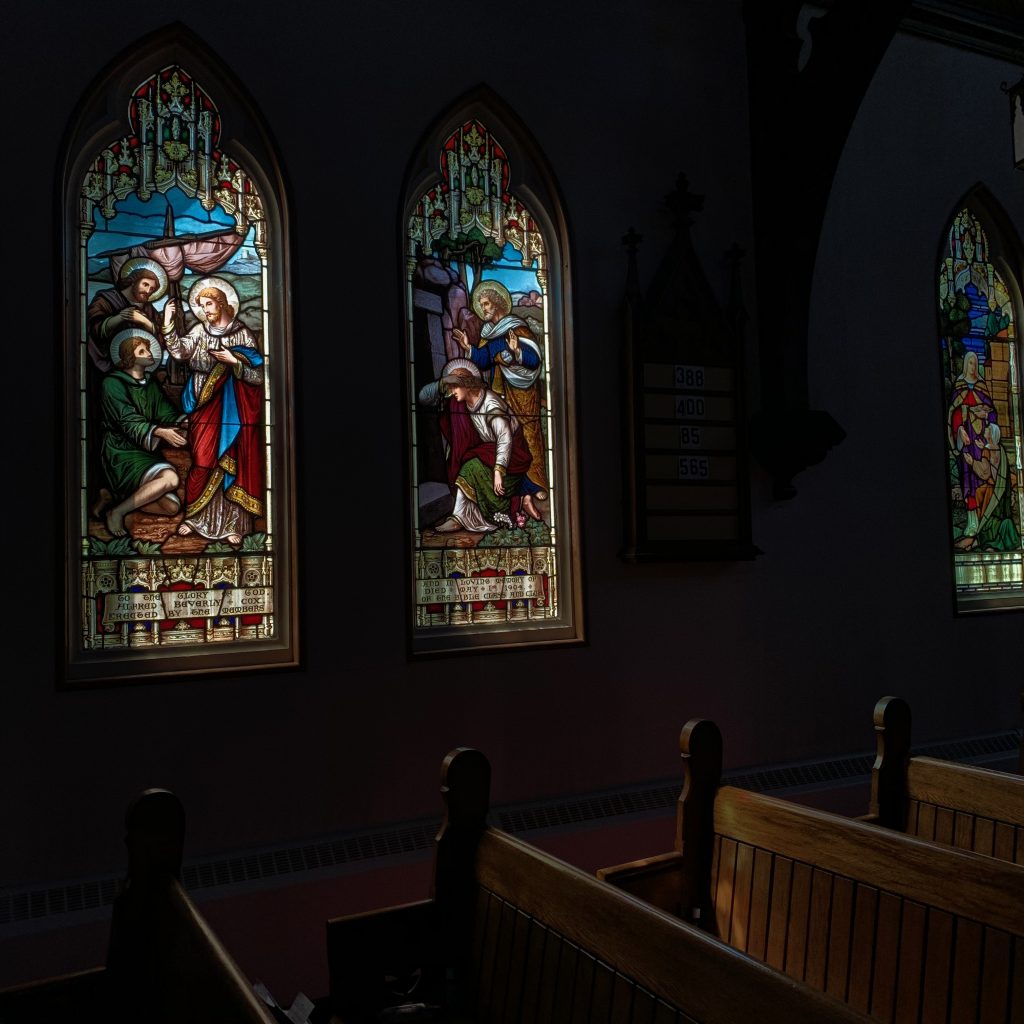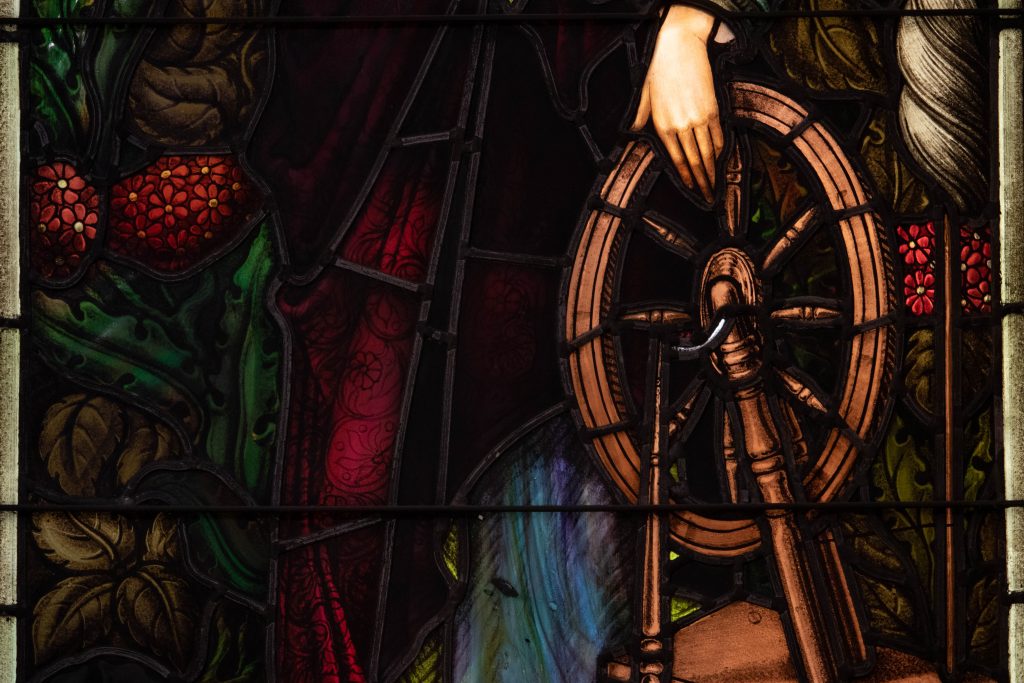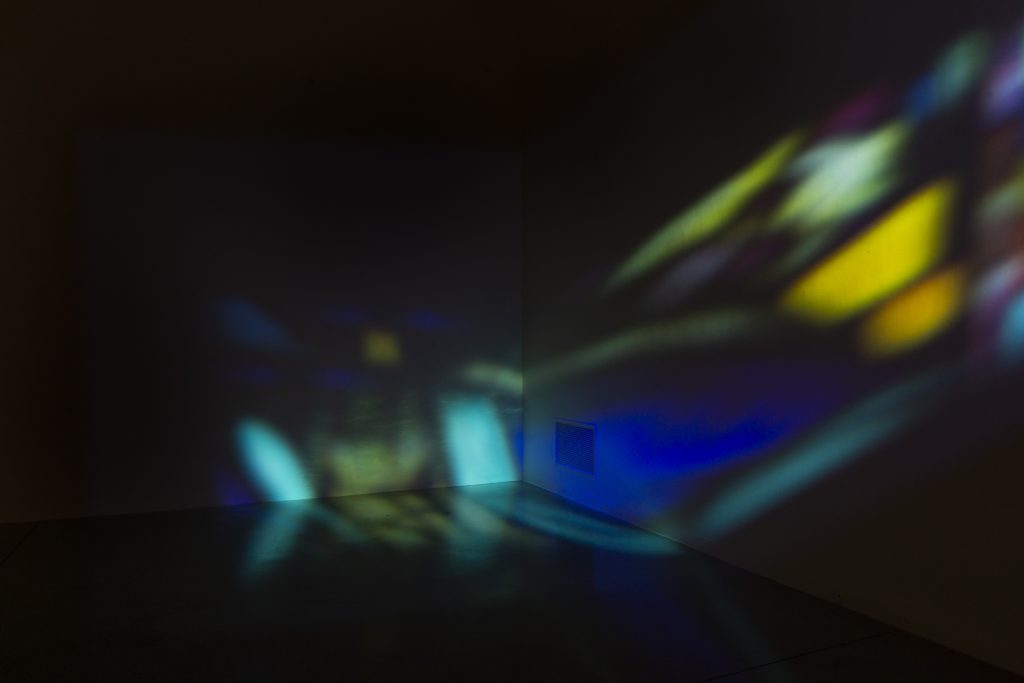3 Light Reflections
The Making of Symphony of Lights
Anahi Gonzalez
Sunlight has been a constant element in my body of work ever since I took my first photograph. The sunlight’s ephemerality and movement throughout the day made me conscious of appreciating the small gestures that this natural resource could provide me as a visual artist. When I see the sunlight playing across a wall, my instant reflex is to place my hand between the light and the wall. I would see the performance of light on my hand and feel the warmth of it as it slipped over my fingers. Sometimes, if I’m lucky, I would have a camera in my other hand and capture the light’s movement. The event is never the same and sooner than you think, it will disappear. I think about time and the ephemeral events in my life when I participate in those lighting dances.
How can I document such a sense using photography?
During the summer of 2020, Dr. Cody Barteet employed me to document the art present in St. John’s church. That summer was the first time I visited the church, and the stained-glass windows captured me. The colours, textures, and iconography were mesmerizing. I would frequently sit on the pews and absorb all the visual elements that I could to document them that summer. Throughout this process, John Berger’s ideas about seeing came to life.
“We only see what we look at. To look is an act of choice.”
I then choose to see the artistry of the stained-glass windows and the tiny evidence of its human creation. I saw glass hands touching, clouds, wood, birds, and small-scale textures on the figures’ fabrics. I wanted to look closer at these details, so I approached the windows. This act of approach reminded me of editing photographs. I approach the stained-glass windows in much the same way I would zoom in on a photo; to examine, retouch and absorb the fine details of a work. I firmly believe that through the details, a great piece is made, and I could see the stained-glass artists followed that notion as well. During this process of observation, I saw the sunlight reflections from the stained glass. Some were on the walls and others on the benches. Documenting another artist’s artwork is one type of time travel. You see how the artwork interacts with the space and identify how the artist’s material decisions during its creation impact the present—an interesting conversation between the present and the past through materiality and space.

While photographing the stained-glass windows, plaques, wood details, and spending hours at St. John’s, I was immersed in the space. I then began to understand the relationship between the stained-glass windows and the sunlight. The reflections caused by such a relationship created lighting dances on the walls that lasted minutes or hours and made me think about my ideas about time from the sunlight’s ephemerality. On some days, there were many reflections from different windows, creating a symphony of lights. After interacting with the art and space, I started thinking about the event of documenting and my role as a photographer in this project. I began to audio record the environmental sound from the outside, which included the church bells and street noises. I filmed some of the light reflection dances on the wall. Documenting is an event where I could bring the past, the experiences, the lived experience here and there, and the collectivity of St. John’s art using not only photography but audio elements as well.

The months passed and I continued visiting St. John’s, with my camera and recorder. I documented the seasonal changes that occurred in the building. I began to perceive St. John’s building as a performer. The building itself had a relationship with its surroundings, as its stained-glass windows had with sunlight. The building and stained-glass windows harmonically connect with the warm light and yard’s flora and fauna during the summer. The birds sang and the neighbours strolled on the sidewalk, conversing with the church’s bells. The warm light and sounds filled St. John’s with life. However, during the winter, the building and stained-glass windows stayed still and quiet. The birds stopped singing outside. There were no lighting dances on the walls.
‘Symphony of Lights’ was the name we chose to showcase the research and art made about St. John’s art. The title encompassed the artistic and cultural history of the building and the research concerning it. When thinking about the curational process and the gallery where we would hold the exhibition, Yvonne Williams quote fragment resonated in us:
“To paint a window so that it accepts this ‘partnership with the sun.’”

The Artlab Gallery, which hosted the exhibition, welcomed the viewers with a forceful recording of an organ played by Paul Stanley. It was important for us to situate our viewers in a space that echoes the building’s ambiance to our own. The exhibition held photographed documentation of stained-glass close-ups to enhance the artistry of Meikle Stained Glass Studio, Sunrise Studios, Yvonne Williams, and Robert McCausland Limited. When entering the space, one of the essential pieces of the exhibition was the re-construction and digital animation of the light reflections in St. John’s into the gallery. Two digital animations were made for the exhibition, where each one had different elements from a variety of windows from Christopher Wallis, Meikle Stained Glass Studio, and Robert McCausland Limited.
During my time documenting St. John’s, I was able to see the lighting reflections of these windows, which motivated me to create this digitalization. With the idea that stained-glass windows come to life with every passing cloud or leaves, the reconstruction and digital animation of the symphony of lights reflected into the gallery was crucial. The animations were immersive, making them more prominent than the ones in St. John’s. Akin to the action of me placing my hand between the sunlight to feel the light fold across my fingers, my intention with this piece was to create an enveloping cue for the viewers before they could see the rest of the exhibit. Thus, creating an ephemeral event within the gallery space.
Just like the stained glass artists and studios, we were fascinated by the relationship that sunlight has with this artform. We explored the play between digital photography and sound to connect the church’s ambiance, reinforcing a line of contact from the past to our own. The combination of modern technology and historical art allowed us through Symphony of Lights to reimagine and explore the vitality of the living light created by the stained-glass windows of St. John’s for the viewing experience of London’s community.
Artist’s tour of the exhibition by Anahí González. (Video: Artlab Gallery).

